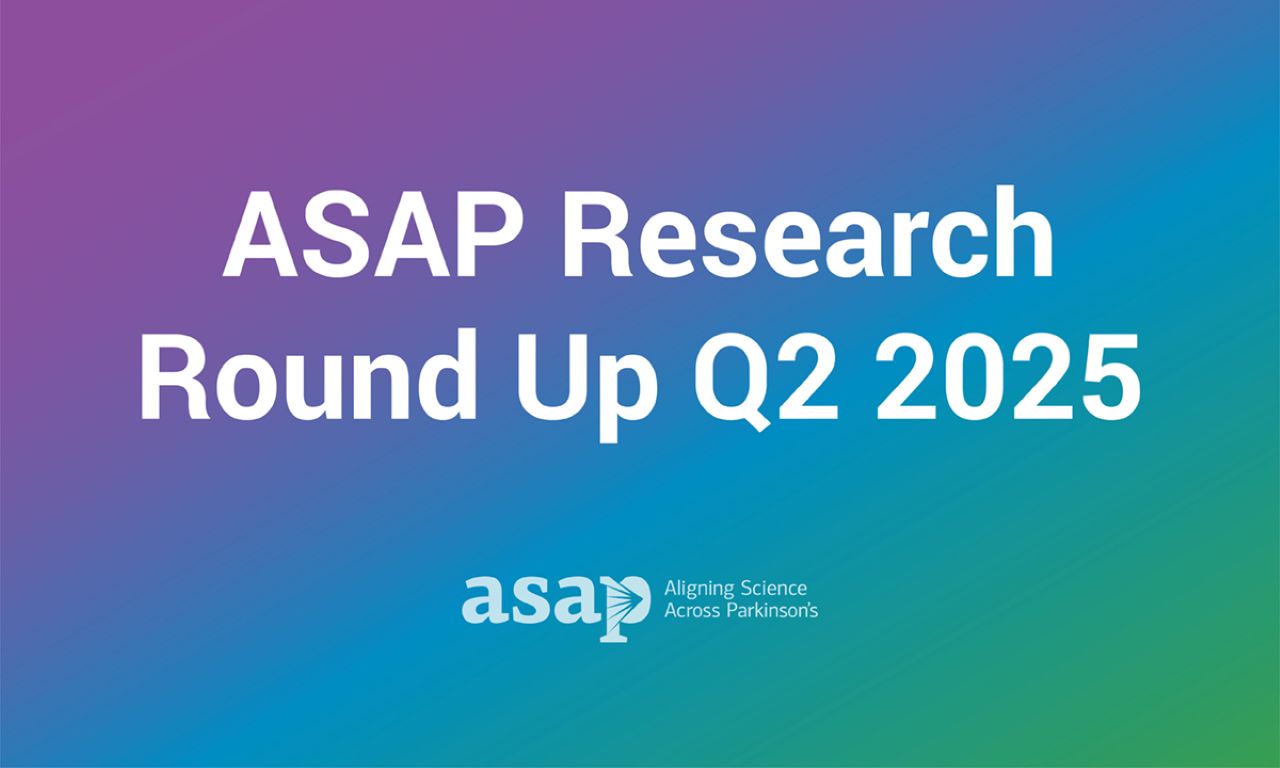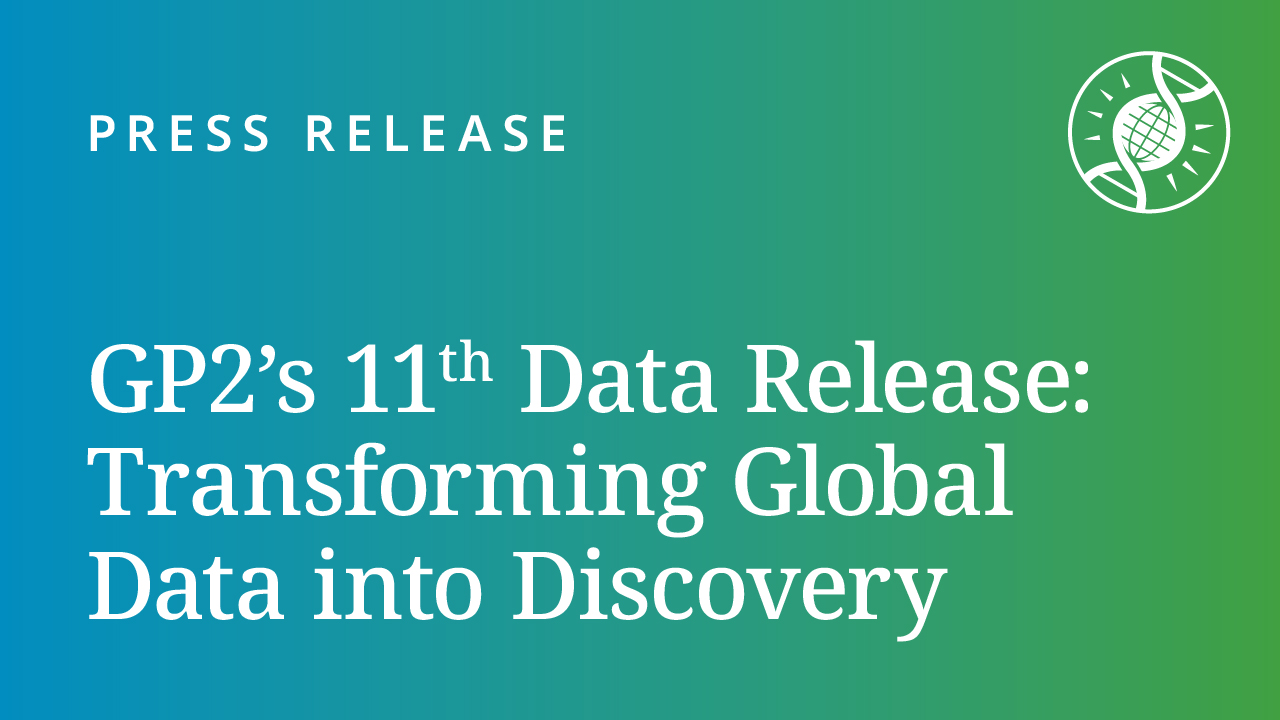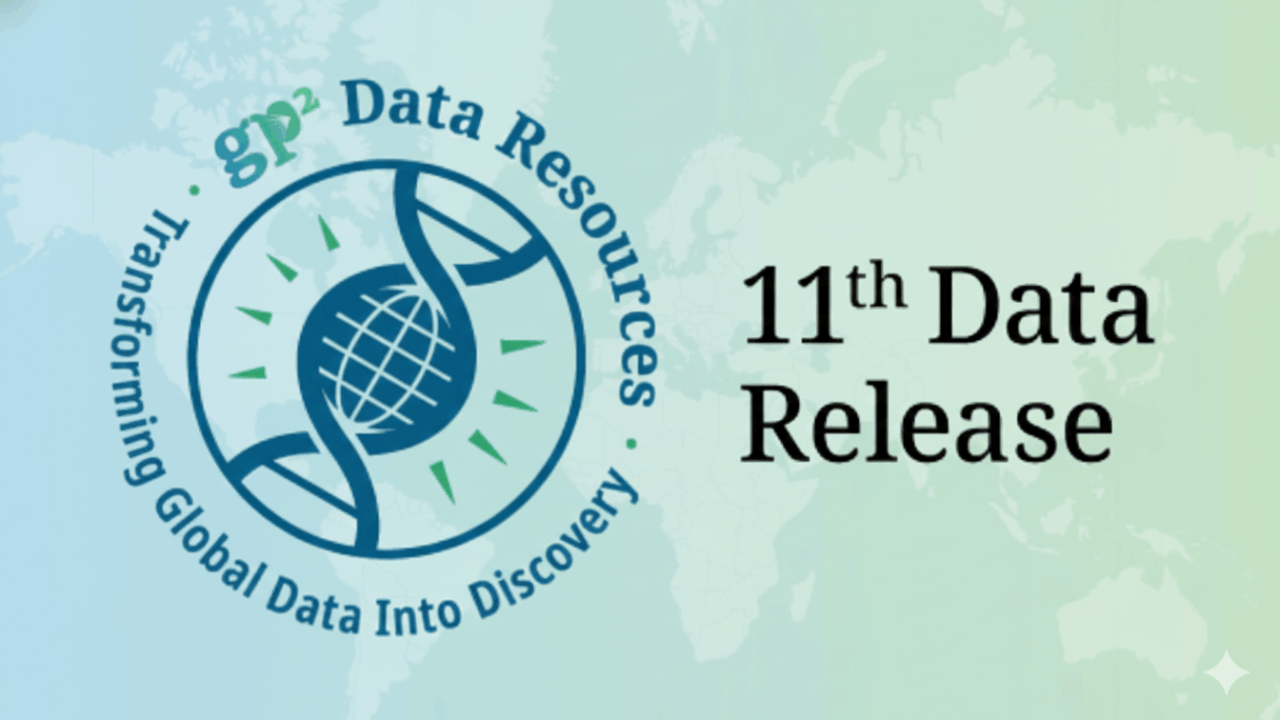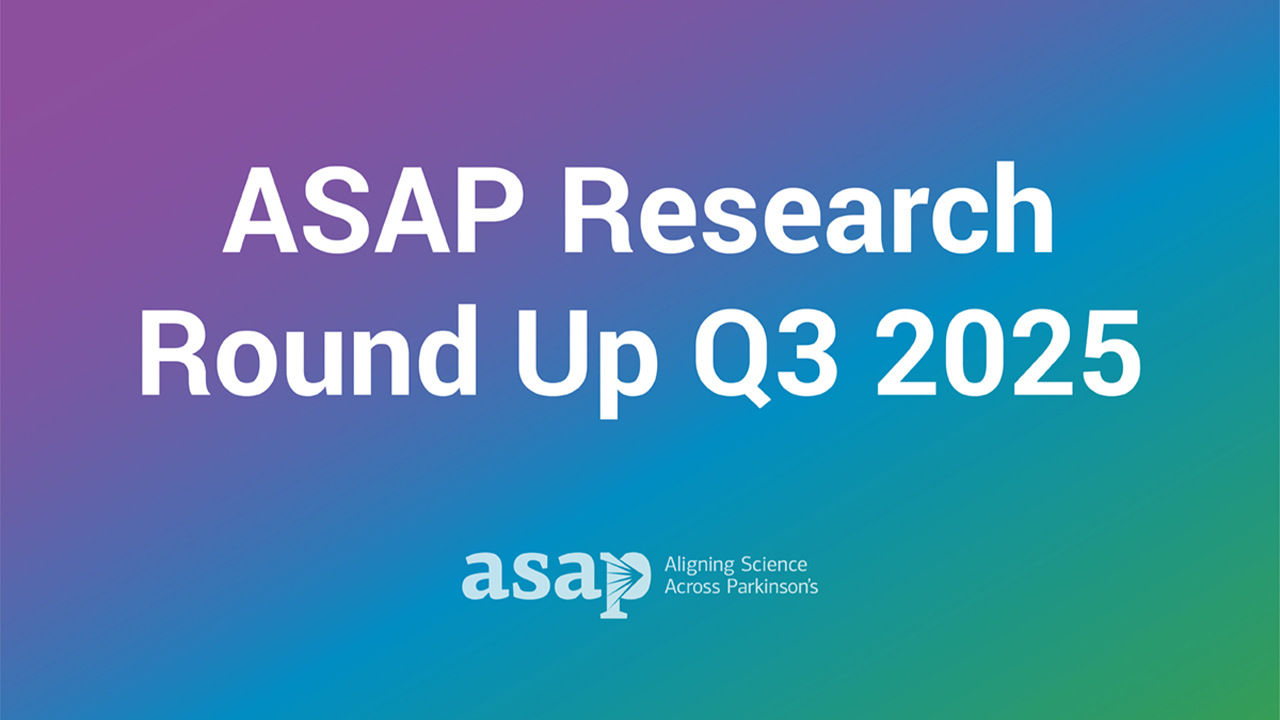Welcome to the second ASAP Research Round-Up. In this issue, we highlight advancements from Q2 across the ASAP portfolio that fill critical knowledge gaps, promote rapid dissemination of scientific insights, expand resource accessibility, and support the next generation of Parkinson’s disease (PD) researchers.

In the second quarter of 2025, ASAP advanced insights into the diverse cellular pathways of PD and contributed to the burgeoning area of biomarker identification for early diagnosis and monitoring disease progression.
Insights into how genetics contributes to PD heterogeneity
Studies of familial PD have identified 20 high-risk and causative genes, including GBA1, PINK1, LRRK2, and SNCA. However, mutations in these genes result in heterogeneous presentation and progression of symptoms with uncertain cellular correlates. Recent papers from the ASAP initiative, some of which are listed below, have contributed to a body of literature detailing how PD risk variants contribute to disease and have identified potential cellular mechanisms underlying variable penetrance.
- Pathogenic variants in PRKN, LRRK2, and SNCA impair lysosomal function and autophagy in a cell-type-specific manner (Team Kirik).
- GBA1 mutations alone are not sufficient to drive the development of Parkinson’s (Team Vangheluwe).
- Disease risk varies based on ethnic background for pathogenic variants of SNCA, VPS13C, LRRK2, and more (Team GP2).
Insights into the role of astrocytes and synaptic plasticity in PD
There is growing evidence that alterations to synaptic signaling play a pathological role in PD. Astrocytes interact directly with synapses to regulate synapse formation, maintenance, and function, suggesting astrocytes may play an important role in the development of PD. However, the mechanisms by which astrocytes may contribute to PD have not yet been fully explored. Recent papers from the ASAP initiative, some of which are listed below, have expanded our understanding of how astrocytes and synaptic plasticity contribute to PD.
- Astrocytes rapidly degrade alpha-synuclein, which may attenuate cell-to-cell transmission of synucleinopathy by reducing available aggregates (Team Lee).
- Compensatory changes to the structure and function of striatal synapses precede motor symptoms (Team Vila).
- The interaction between astrocytes and neuronal synapses is impaired by the LRRK2 G2019S mutation (Team Calakos).
Insights into potential PD biomarkers
Biomarkers are defined characteristics measured as an indicator of pathological processes, usually measured from a blood, bodily fluid, or tissue sample. In Parkinson’s disease, the use of biomarkers holds potential to diagnose patients earlier and with greater precision. Biomarkers may also allow physicians to track progression and treatment efficacy. However, a greater understanding of when and how PD biomarkers can be used in a clinical setting is needed. Recent papers from the ASAP initiative, some of which are listed below, have developed potential new biomarkers for PD.
- Although the alpha-synuclein seeding assay (SAA) strongly correlates with symptoms of Parkinson’s like hyposmia and REM Sleep Behavior Disorder (Team Hafler), it does not reliably predict disease progression (Team Chen).
- Myeloid-mediated TNF-alpha inflammatory signaling in cerebrospinal fluid identifies patients with prodromal PD (Team Hafler).
- A simplified smell test can be used to reliably identify Parkinson’s disease in multiple cohorts (Team Schlossmacher).
Driving new research
To continue to improve our understanding of PD, submissions opened for two new RFAs, including, two closed Black and African American Connections to Parkinson’s Disease (BLAAC-PD) RFAs focusing on data management and clinical trial coordination.

In the second quarter of 2025, ASAP supported virtual and in-person events to facilitate connections and provide avenues for sharing ideas.
- LRRK2 Central and mito911 hosted webinars with speakers from NIH, Royal Veterinary College, University of Dundee, Medical University of Vienna, Istanbul University, and Washington University in St. Louis.
Interested in joining these webinars? You can learn more about upcoming events and register to attend on the ASAP website. Check it out!
- In April, more than 300 researchers, clinicians, and study participants came together in New York City for the 2025 Annual Parkinson’s Progression Markers Initiative (PPMI) Investigators Meeting. Read meeting highlights.
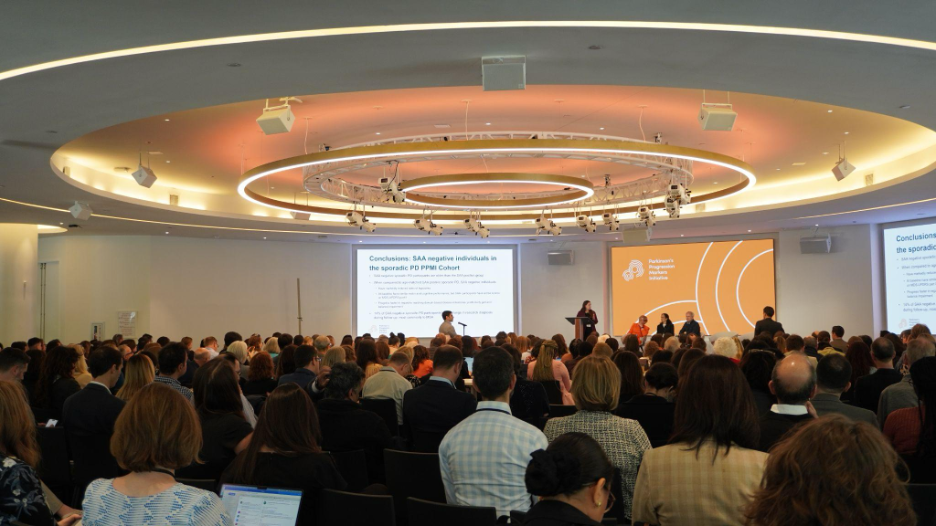
- In June, GP2 held a regional training initiative in Kyrgyzstan, which brought together clinicians and data scientists to discuss PD genetics, learn sample collection and DNA extraction, and develop skills in data management and privacy.
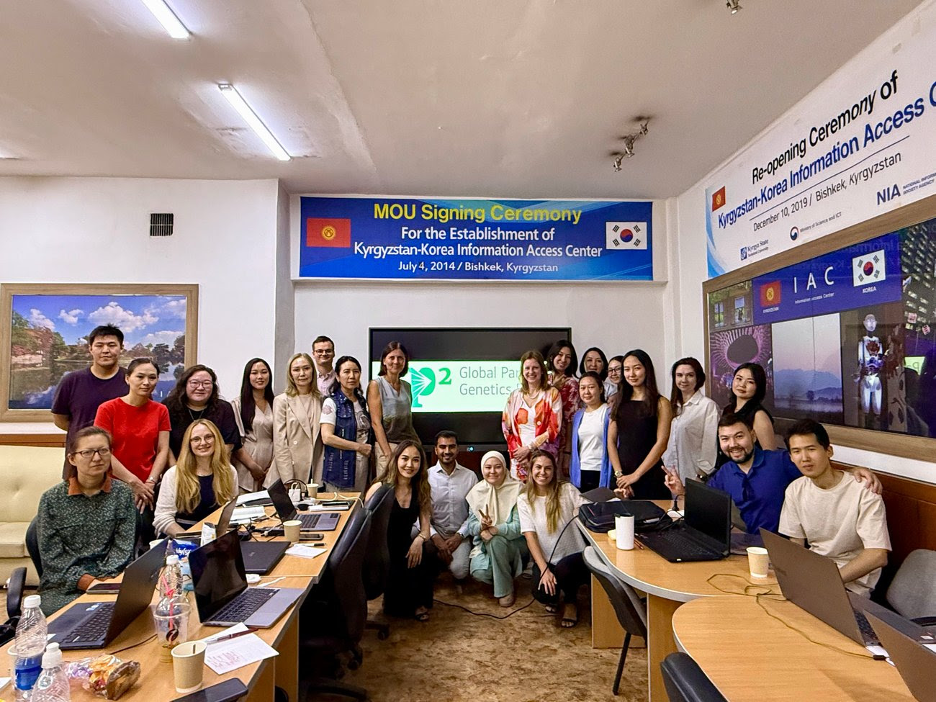
- In June, BLAAC-PD held a co-learning forum focused on how to communicate complex messages, such as PD genetics or data privacy, to potential participants.
- In July, GP2 held its first training workshop in Chile. Participants explored the GP2 and LARGE-PD datasets and covered topics such as local ancestry, family and kinship studies, and polygenic risk scores.
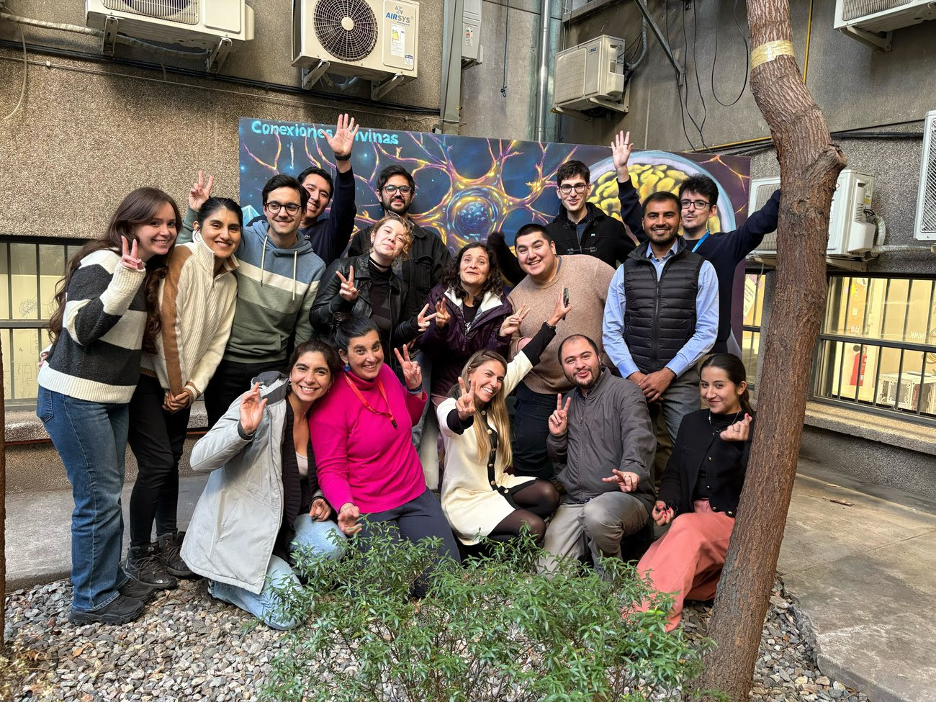
- BLAAC-PD sites are participating in health fairs and community events to connect with community groups and facilitate enrollment. 892 participants have been enrolled in BLAAC-PD as of June 30.

Promoting open science is at the core of all ASAP work. We are committed to sharing our philosophy and strategy for implementing our open science policy. Highlights of our engagement with the broader open science community from the second quarter of 2025 include:
- Showcasing more than 2,500 ASAP-funded research outputs and tools on the ASAP Catalog.
- Sharing the ASAP Collaborative Research Network Impact Report, which details how the CRN has accelerated discoveries and improved outcomes through collaboration, resource generation, and data sharing over the past five years.
In the second quarter of 2025, the ASAP community introduced new tools and resources for the Parkinson’s disease research field, including:
- A standardized TruAI automated quantification platform for analysis of intracellular neuromelanin (Team Vila).
- A modular toolbox of fluorescent markers (GEM-SCOPe) for visualization of mitochondria and lysosomes (Team Vangheluwe).
- A software package (CREsted) to analyze scATAC-seq data at cell type-specific, nucleotide-level resolution (Team Voet).
- A structural protein interactome viewer (EndoMAP.v1) of early human endosomes (Team Harper).
- The first type II kinase inhibitors that target the inactive conformation of LRRK2 (Team Reck-Peterson).
- A collection of protocols used to assess motor and non-motor symptoms of Parkinson’s disease in rodent models (Assessment of Motor & Non-Motor PD Symptoms Working Group).
- A collaboration with The Michael J. Fox Foundation and The 10,000 Brains Project to develop a digital brain banking program that includes brain tissue samples from patients with Parkinson’s Disease.
- A collaboration between GP2, Parkinson’s Foundation, and Rune Labs to integrate genetic testing with wearable-based symptom tracking devices to identify genetic and digital biomarkers, and medication response signatures.
Additionally, the Discover ASAP video series highlighted three resources or findings from the ASAP community:
- “Mechanisms of Levodopa-Induced Dyskinesia” (Team Edwards)
- “Dopabase: An Online Data Explorer Tool for Dopaminergic Neuron Subpopulations” (Team Awatramani)
- “GEM-SCOPe: Genetically Encoded and Modular SubCellular Organelle Probes for Live-Cell Imaging” (Team Vangheluwe)

Interested in viewing past Discover ASAP videos? ASAP created a YouTube playlist containing recordings of these interviews. Check it out!

In the second quarter of 2025, ASAP recognized Parkinson’s Awareness Month by honoring the scientists behind the research who are pushing Parkinson’s discoveries forward.
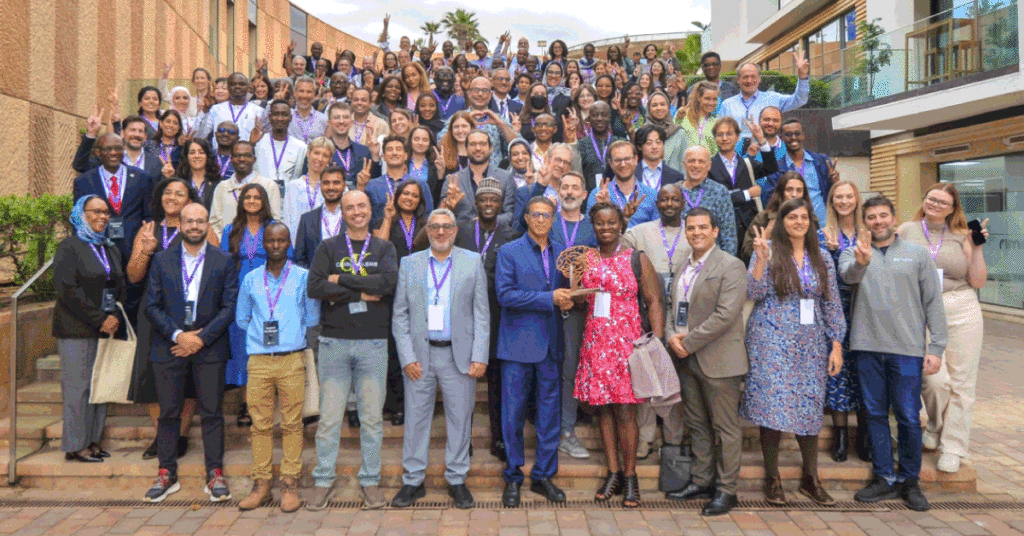
We also enabled researchers to expand their knowledge through virtual training opportunities, including:
- Releasing the sixth GP2 micro e-learning video, “Open Science Best Practices Across the Research Lifecycle,” which provides a foundational overview of open science and highlights best practices across the research lifecycle.
Interested in viewing the other micro e-learning videos? ASAP created a YouTube playlist containing all the under 10-minute videos touching on key topics such as Parkinson’s disease clinical insights, genetics, data analysis techniques, and GP2 resources. Check it out!
- GP2 received a record number of applications to the 2025 GP2 Underrepresented Populations PhD Program, aimed to support trainees and their supervisors who identify as belonging to an underrepresented group in Parkinson’s disease (applications closed on May 5).
- GP2 created the “Train the Trainer” (TTT) model to build local expertise and skills in PD genetics through ongoing training of local researchers in the GP2 network. In May, GP2 hosted its first training workshop led entirely by GP2 trainees, showcasing the potential of the TTT model.
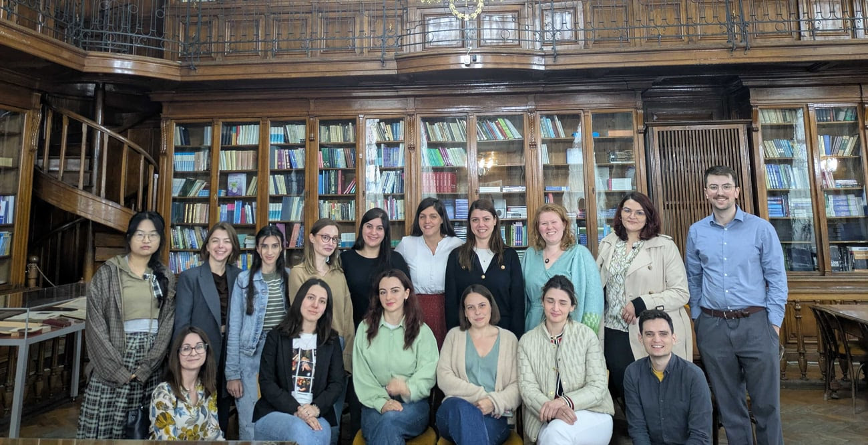
Thank you for engaging with this edition of the ASAP Research Round-Up. We are excited to continue sharing the latest research progress, collaborations, and resource developments that advance our understanding of Parkinson’s disease. Looking ahead to the next quarter, we remain dedicated to fostering innovation, inclusivity, and collaboration within the Parkinson’s research community. For more updates on upcoming events, publications, and key developments within ASAP, visit our ASAP Highlights page.


